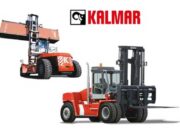Forklift specific applications
Are you considering buying or renting a forklift? To help you navigate and make your decision whether to rent or buy a forklift, we provide some basic information that will help you understand the specific application of the forklift.
Forklifts are designed to work in warehouse spaces with narrow aisles. The task of the forklift is loading, unloading, lifting, moving and distributing objects with large loads; With a structure of 2 wheels or 1 wheel for each leg. The rudder is placed under the driver’s seat. The driver sits on the side when operating the forklift.
The wheels of a reach truck are the same length as a normal counterbalance forklift. However, the body of the forklift is more compact than that of a counter-balance forklift. When lifting a load (pallets) up and down on a shelf in a narrow space, using a reach truck will be more convenient for loading and unloading goods.

Some of the most frequently asked questions by car owners are:
Can a forklift work outdoors?
Yes, with a relatively flat work floor; But they are battery powered devices so they may not be able to work in the rain. If the forklift is equipped with larger wheels, it can work on steeper inclines due to the higher ground clearance.
Is the driver sitting in the car?
Yes, the driver sits on his side when operating the forklift, as this results in improved operator (driver) comfort and control due to working in narrow aisles.
Can forklifts lift pallets from trucks?
A reach truck can also be used in the same way as a counterbalance forklift truck and can be retrofitted for short haul operations. On the other hand, it can also be used to gently lift pallets up and down the truck.
Choosing the right equipment for narrow walkways can be a complex and difficult task. Contact us and you will receive advice from experienced staff and we will guide you through the processes to ensure you get the best forklift for your specific application needs.







